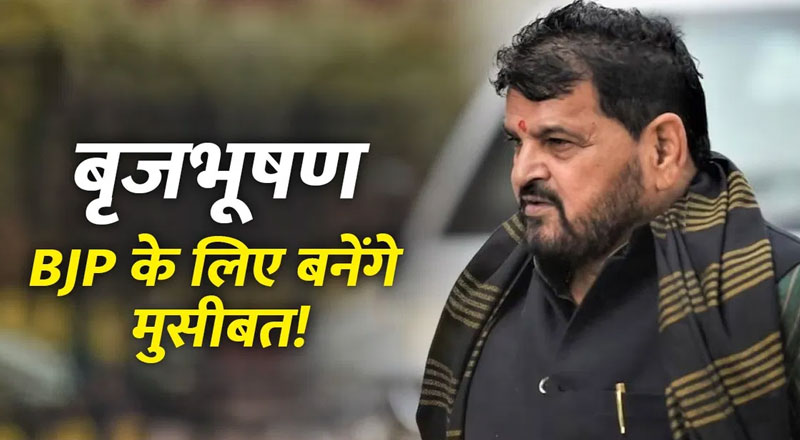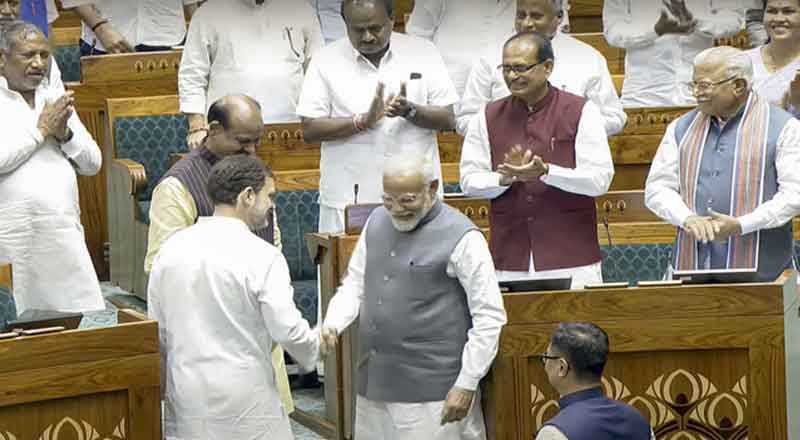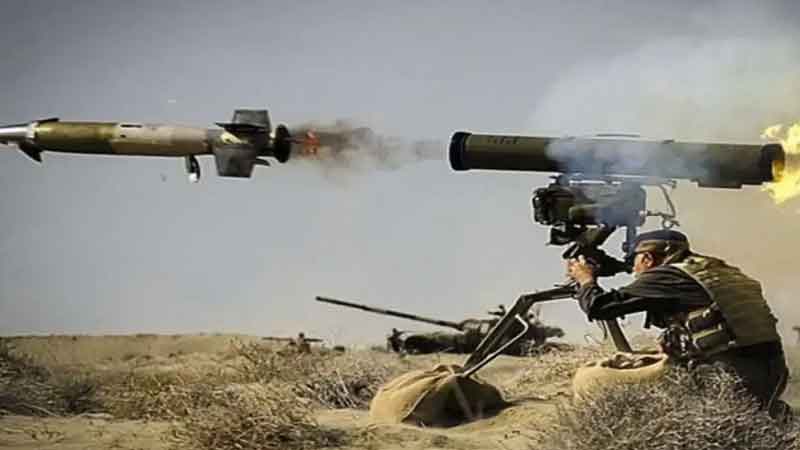When the protests first began against Wrestling Federation of India (WFI) president and BJP MP Brij Bhushan Sharan Singh over alleged sexual harassment charges, it was seen as an issue confined to wrestlers from Haryana, most of them belonging to the state’s dominant Jat community. The ruling BJP though was not worried, having built a non-Jat constituency for itself in the state, which will go to polls next year.
Things have changed since, with details of the damaging allegations by the wrestlers against Brij Bhushan mounting pressure on the BJP government at the state and Centre to act, and the agitation finding resonance in Jat-dominated areas in western Uttar Pradesh and poll-bound Rajasthan.
The Centre has now bought time by promising the wrestlers both quick police action as well as phasing out of Brij Bhushan and his family from the WFI.
The BJP realizes that while it could overlook the Jat factor in Haryana, the erosion of its support base among them in UP is already costing it. The BJP had made gains in the state by using the Jats to negate the Yadav factor.
Apart from the 2022 Assembly elections, where the Jat-based RLD showed a revival and won eight seats, in the recent elections to posts of nagar panchayat and nagar palika chairmen in districts considered Jat strongholds too, both the RLD and its ally Samajwadi Party performed creditably.
The BJP, on the other hand, didn’t perform as well as it would have expected. The trend held even in districts of its state president Bhupendra Chaudhary (himself a Jat, Moradabad), and its other Jat leaders like Sanjeev Balyan (Muzaffarnagar) and Satya Pal Singh (Baghpat). The party only won 20 of the 56 Nagar Palika chairman seats and 34 of the 124 Nagar Panchayat chairman seats in Jat-dominated districts.
At a time when the BJP is trying to mop up as many seats as it can ahead of the 2024 Lok Sabha elections, this news coming from the make-or-break state is worrying for the party. In UP, where they are concentrated in the western districts, mainly cultivate sugarcane, and are the state’s richest farming community, the Jats have significant influence in a dozen Lok Sabha and around 40 Assembly seats.
Overall, the politically powerful community has the potential of influencing results in nearly 40 Lok Sabha seats and around 160 Assembly seats, counting their spread across UP, Haryana, Rajasthan, and Delhi.
Before 2014, their dominance seemed to be on the wane, with the emergence of other, also farm-based, communities, like the Yadavs and Kurmis. A floundering RLD, dependent on one or the other party, left them with little political representation.
This changed after the 2013 Muzaffarnagar riots in west UP, involving largely Jats and Muslims. In the 2014 Lok Sabha elections that followed, and then in 2019, the RLD father-son duo of Ajit Singh and Jayant Chaudhary lost on their turf to BJP candidates.
In the 2017 Assembly elections, the BJP fielded 15 Jat candidates, of whom 14 won. To counter the RLD’s old established Jat leaders, the BJP brought in newcomers like Sanjeev Balyan and Satya Pal Singh (a retired IPS officer) and succeeded.
By the time of the 2022 Assembly elections though, the Jat support was divided. While the BJP has 10 Jat MLAs currently, the RLD has four and the SP three.
Historically, the Jats have held influence in North India’s politics. In the 1950s and 60s, Devi Lal and Ranbir Singh Hooda (the father of former Haryana chief minister and senior Congress leader Bhupinder Singh Hooda) were prominent Jat leaders of (undivided) Punjab. In Rajasthan, there was Nathuram Mirdha, and in UP, Chaudhary Charan Singh (the father of Ajit Singh).
After the creation of Haryana in 1966, with Jats at more than 25% of the population in the new state, leaders such as Bansi Lal emerged.
In UP, until his demise in May 1987, Charan Singh was the tallest leader of the community, with a following across castes as well as among Muslims. He became the Chief Minister of UP twice, once as part of a multi-party alliance including the Jan Sangh and once in alliance with a Congress faction headed by Indira Gandhi. He also served as Deputy Prime Minister and, for a little less than six months in 1979-80, the Prime Minister.
Under his influence, farmer communities moved away from both Congress and Jan Sangh, the precursor of the BJP. However, after Charan Singh, the Jats have never had a CM in UP.
Socially, Jats are categorized as OBCs in states such as UP, Rajasthan, Delhi, Himachal Pradesh, and Madhya Pradesh, but not in the Central list. Two Rajasthan districts Bharatpur and Dholpur are an exception, with the Jats here in the Central list of OBCs.
(With inputs from agencies)





